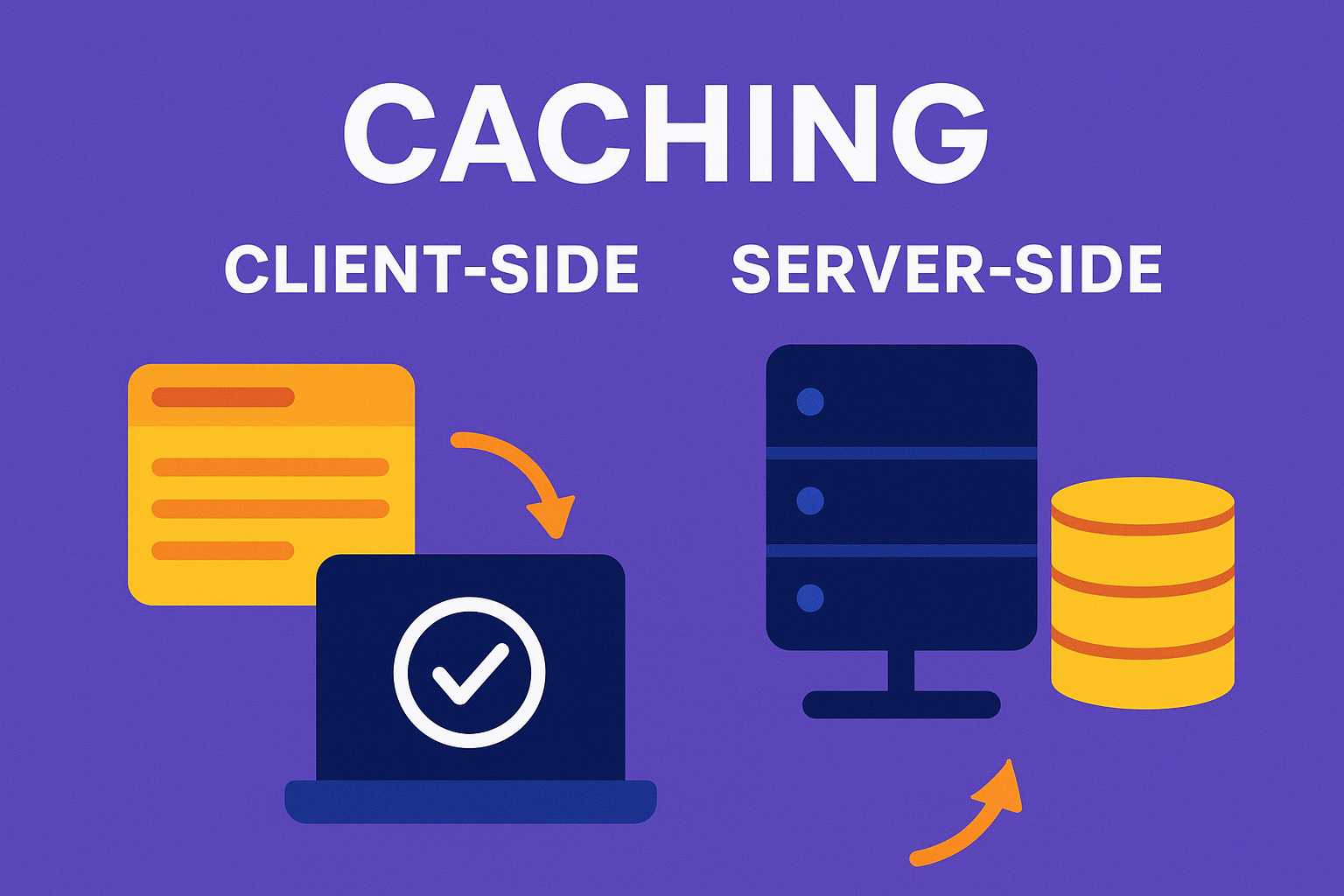Every developer dreams of building an application that responds instantly. That snappy experience where clicking a button or loading a page feels effortless. But behind every sleek front-end, there’s often a struggling database and an overworked server battling to fetch the same data again and again.
This constant repetition creates two major problems for modern web apps: high latency and skyrocketing infrastructure costs.
If your goal is to transition from building small, slow projects to deploying high-performance web applications that handle real traffic smoothly, there’s one architectural concept you must master: caching.
Caching is the single biggest secret behind the world’s fastest web applications. It’s not just an optimization — it’s a core performance strategy that reduces server load, saves you money, and gives users the speed they crave.
In this guide, we’ll break down what caching is, the different types of caching you need to know, and how to start implementing it in your projects today.
The Two Sides of Caching: Client-Side vs. Server-Side
When we talk about caching, there are two main layers to understand: client-side caching and server-side caching. Both play a vital role in making web apps fast and efficient.
Client-Side Caching: Speed Starts in the Browser
Client-side caching happens directly in the user’s browser. It’s the first defense against unnecessary network requests.
When a user visits your website, their browser stores static assets like images, CSS, and JavaScript locally. On subsequent visits, the browser loads these files from local storage instead of fetching them again from the server. The result? Pages load instantly, and your server workload drops significantly.
To make this work effectively, you need to configure proper HTTP cache headers such as Cache-Control, Expires, and ETag. These tell browsers when to reuse cached resources or request new ones — ensuring users always get the latest version when necessary.
Server-Side Caching: Reducing Load at the Source
Server-side caching works behind the scenes — it stores frequently accessed data so your backend doesn’t have to recompute or re-fetch it from the database every time.
Imagine an online store with thousands of visitors viewing the same product. Without caching, every page load would trigger identical database queries. With caching, that product data can be stored in memory (using tools like Redis or Memcached) and served instantly — cutting response times from seconds to milliseconds.
This is the secret sauce behind the lightning-fast performance of modern platforms like Amazon, Netflix, and Facebook.
The Main Types of Server-Side Caching You Should Know
Understanding the main caching types helps you choose the right approach for your application.
1. Database Query Caching
Stores the results of expensive or repetitive queries. Perfect for dashboards, reports, or frequently accessed content.
2. Application-Level Caching
Stores processed data inside your app layer. Frameworks like Laravel, Django, and Express provide built-in caching APIs to simplify this process.
3. Full-Page Caching
Saves entire rendered HTML pages so users get a prebuilt response. Great for blogs, product pages, and content that doesn’t change frequently.
4. CDN (Content Delivery Network) Caching
CDNs such as Cloudflare, Akamai, and AWS CloudFront store static assets on servers around the world. This ensures users receive content from the nearest location — dramatically improving speed and reducing latency.
Why Caching Saves You Money (And Improves Scalability)
Every server request consumes CPU, memory, and bandwidth. As your user base grows, those requests multiply — driving up your hosting and database costs.
Caching drastically cuts the number of requests that actually reach your database or backend. Fewer requests mean lower server usage, reduced cloud bills, and faster scalability.
For startups, caching can mean the difference between staying on a budget-friendly hosting plan and needing expensive infrastructure. For large-scale systems, it can save thousands of dollars per month in cloud costs.
In short: caching boosts performance and lowers expenses — a win-win every developer should take advantage of.
How to Start Implementing Caching Today
Here’s a simple roadmap to introduce caching into your web applications:
- Identify bottlenecks. Use profiling tools to spot slow queries or endpoints.
- Choose what to cache. Cache static or frequently reused data — avoid caching highly dynamic content.
- Pick your tools. Use Redis, Memcached, or a CDN for robust caching layers.
- Set cache expiration (TTL). Cached data should eventually expire or refresh to stay accurate.
- Measure improvements. Benchmark your app’s response times before and after caching. The results will often amaze you.
The Real Secret: Caching Isn’t Optional — It’s Essential
In today’s digital world, speed equals success. Users expect instant responses, and even a one-second delay can mean lost conversions or frustrated visitors.
Caching isn’t just a nice-to-have feature — it’s the backbone of modern web performance optimization. It’s what separates slow, costly apps from scalable, lightning-fast systems.
By learning to implement caching effectively, you’ll not only create faster applications but also smarter, more efficient ones that scale effortlessly and save real money in the process.
If you’ve ever wondered how top tech giants deliver blazing-fast experiences across the globe — now you know their secret: they cache everything.
And now, so can you.
Leave a comment
Your email address will not be published. Required fields are marked *



